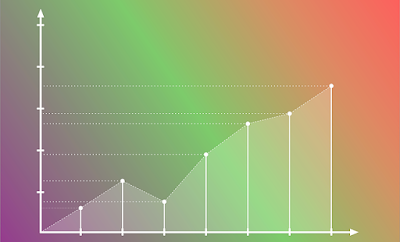Average cost Total cost per unit of output.
Average fixed cost Total fixed cost per unit of output.
Average product Output per unit of the variable input.
Average revenue Total revenue per unit of output.
Average variable cost Total variable cost per unit of output.
Break-even point is the point on the supply curve at which a firm earns normal profit.
Budget line consists of all bundles which cost exactly equal to the consumer’s income.
Budget set is the collection of all bundles that the consumer can buy with her income at the prevailing market prices.
Constant returns to scale is a property of production function that holds when a proportional increase in all inputs results in an increase in output by the same proportion.
Cost function For every level of output, it shows the minimum cost for the firm.
Decreasing returns to scale is a property of production function that holds when a proportional increase in all inputs results in an increase in output by less than the proportion.
Demand curve is a graphical representation of the demand function. It gives the quantity demanded by the consumer at each price.
Demand function A consumer’s demand function for a good gives the amount of the good that the consumer chooses at different levels of its price when the other things remain unchanged.
Duopoly is a market with just two firms.
Equilibrium is a situation where the plans of all consumers and firms in the market match.
Excess demand If at a price market, demand exceeds market supply, it is said that excess demand exists in the market at that price.
Excess supply If at a price market, supply is greater than market demand, it is said that there is excess supply in the market at that price.
Firm’s supply curve shows the levels of output that a profit maximising firm will choose to produce at different values of the market price.
Fixed input An input which cannot be varied in the short run is called a fixed input.
Income effect The change in the optimal quantity of a good when the purchasing power changes consequent upon a change in the price of the good is called the income effect.
Increasing returns to scale is a property of production function that holds when a proportional increase in all inputs results in an increase in output by more than the proportion.
Indifference curve is the locus of all points among which the consumer is indifferent.
Inferior good A good for which the demand decreases with increase in the income of the consumer is called an inferior good.
Isoquant is the set of all possible combinations of the two inputs that yield the same maximum possible level of output.
Law of demand If a consumer’s demand for a good move in the same direction as the consumer’s income, the consumer’s demand for that good must be inversely related to the price of the good.
Law of diminishing marginal product If we keep increasing the employment of an input with other inputs fixed then eventually a point will be reached after which the marginal product of that input will start falling.
Law of variable proportions The marginal product of a factor input initially rises with its employment level when the level of employment of the input is low. But after reaching a certain level of employment, it starts falling.
Long run refers to a time period in which all factors of production can be varied.
Marginal cost Change in total cost per unit of change in output.
Marginal product Change in output per unit of change in the input when all other inputs are held constant.
Marginal revenue Change in total revenue per unit change in sale of output.
Marginal revenue product(MRP) of a factor Marginal Revenue times Marginal Product of the factor.
Market supply curve shows the output levels that firms in the market produce in aggregate corresponding to different values of the market price.
Monopolistic competition is a market structure where there exist a very large number of sellers selling differentiated but substitutable products.
Monopoly A market structure in which there is a single seller and there are sufficient restrictions to prevent any other seller from entering the market.
Monotonic preferences A consumer’s preferences are monotonic if and only if between any two bundles, the consumer prefers the bundle which has more of at least one of the goods and no less of the other good as compared to the other bundle.
Normal good A good for which the demand increases with increase in the income of the consumer is called a normal good.
Normal profit The profit level that is just enough to cover the explicit costs and opportunity costs of the firm is called the normal profit.
Oligopoly A market consisting of more than one (but few) sellers is called an oligopoly.
Opportunity cost of some activity is the gain foregone from the second best activity.
Perfect competition A market environment wherein (i) all firms in the market produce the same good and (ii) buyers and sellers are price-takers.
Price ceiling The government-imposed upper limit on the price of a good or service is called price ceiling.
Price elasticity of demand for a good is defined as the percentage change in demand for the good divided by the percentage change in its price.
Price elasticity of supply is the percentage change in quantity supplied due to a one per cent change in the market price of the good.
Price floor The government-imposed lower limit on the price that may be charged for a particular good or service is called price floor.
Price line is a horizontal straight line that shows the relationship between market price and a firm’s output level.
Production function shows the maximum quantity of output that can be produced by using different combinations of the inputs.
Profit is the difference between a firm’s total revenue and its total cost of production.
Short run refers to a time period in which some factors of production cannot be varied.
Shut down point In the short run, it is the minimum point of AVC curve and in the long run, it is the minimum point of LRAC curve.
Substitution effect The change in the optimal quantity of a good when its price changes and the consumer’s income is adjusted so that she can just buy the bundle that she was buying before the price change is called the substitution effect.
Super-normal profit Profit that a firm earns over and above the normal profit is called the super-normal profit.
Total cost is the sum of total fixed cost and total variable cost.
Total fixed cost The cost that a firm incurs to employ fixed inputs is called the total fixed cost.
Total physical product Same as the total product.
Total product If we vary a single input keeping all other inputs constant, then for different levels of employment of that input we get different levels of output from the production function. This relationship between the variable input and output is referred to as the total product.
Total return Same as the total product.
Total revenue is equal to the market price of the good multiplied by the quantity of the good sold by a firm.
Total revenue curve shows the relationship between firm’s total revenue and firm’s output level.
Total variable cost The cost that a firm incurs to employ variable inputs is called the total variable cost.
Value of marginal product (VMP) of a factor Price times Marginal Product of the factor.
Variable input An input the amount of which can be varied.
Tags: Economics, Micro Economics, Summary Economics, Notes of Economics.
no exam life insurance, consolidation loans, general liability insurance, small business insurance companies, liability insurance
You can download this as PDF >>> DOWNLOAD NOW



No comments:
Post a Comment